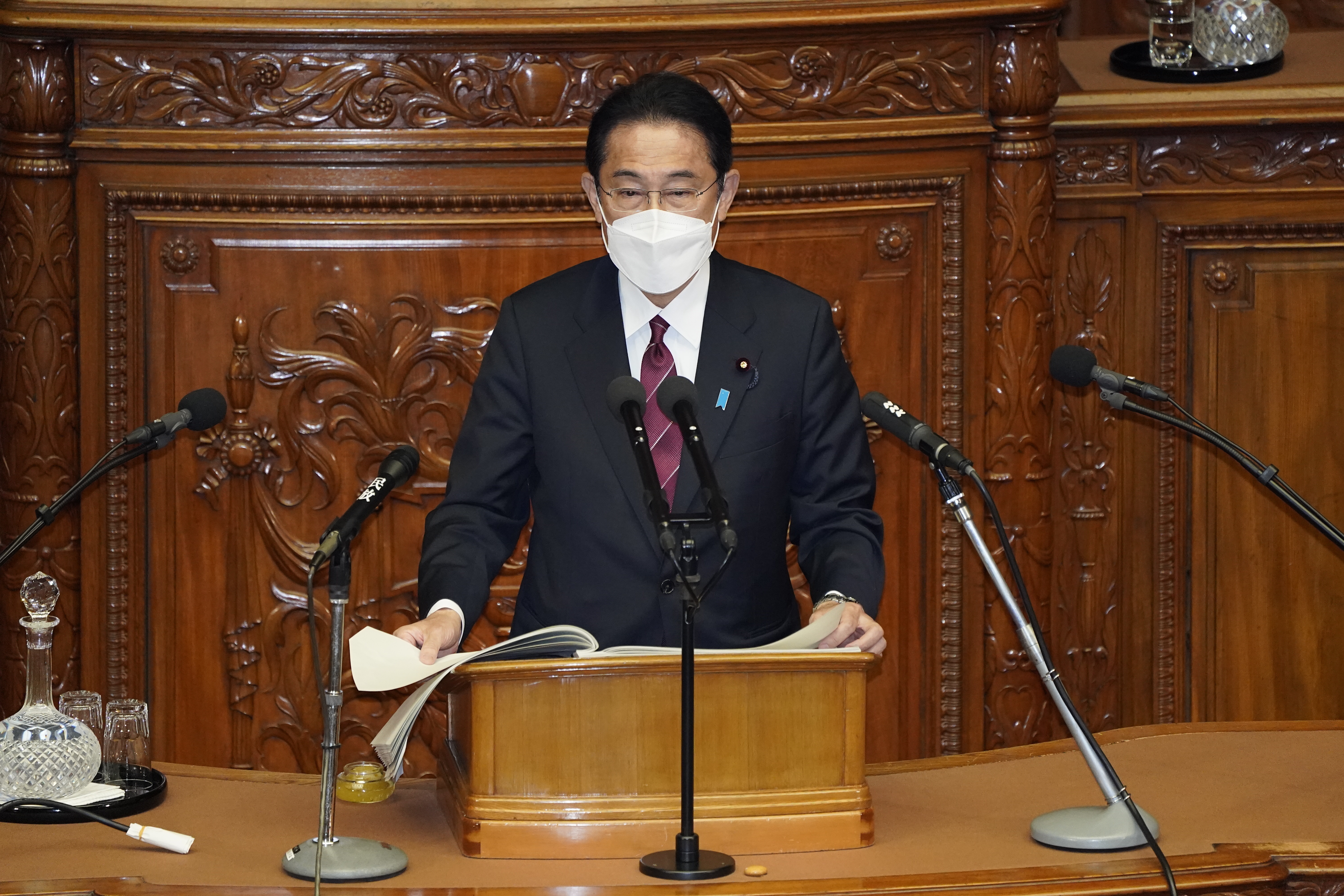- Article
- Tax & Social Security Reform
Dissecting the Tax Schemes of Japan's "Third Force" (2)
November 12, 2012
In the second of a two-part series on the Japan Restoration Party's tax platform, Shigeki Morinobu explores the optimum forms of taxation to finance local government and prospects for interregional fiscal adjustment.
Reality Check on Decentralization and Local Taxes
I agree with the JRP that Japan's highly centralized administrative structure is outdated and incapable of meeting the diversified needs of the nation, and that we need to strengthen the functions of municipal government and continue pursuing the devolution of power.
However, the JRP has called for a doshu system of regional administration without offering any details to clarify how such a system would operate. The Constitution of Japan establishes a unitary state and does not allow for partial transfer of the central government's legislative or judicial powers to local governments. When we talk about devolution, we must recognize that there are inherent limits to decentralization in Japan.
What Kind of Tax Should Finance Local Government ?
The best tax for financing local government is one that provides stable revenues and minimizes regional disparities. It should also allow administrators and citizens to grasp the relationship between burdens and benefits. Ideally, if local residents want additional services, they should be able to make an informed choice between a tax increase and a cut in other services.

From this perspective, the taxes best suited to financing local government are direct taxes—that is, property taxes and local income taxes. Property taxes make sense to local citizens in that they place a larger burden on owners of large homes or extensive properties, who benefit more from such services as law enforcement, fire fighting, and garbage collection. In Britain, local governments rely exclusively on property taxes in the form of the council tax. Rates vary drastically, reflecting the level of services provided.
The generous social services provided by local governments in Sweden are financed exclusively by personal income taxes. In Germany, municipalities get two-thirds of their tax revenue from personal income taxes. In these countries it is clear to all that services are provided at the expense of the residents.
In this way, local tax systems should empower citizens to decide for themselves whether they want to live in a community that spends more on its police force, fire department, school system, and welfare services at the cost of higher taxes, or whether they prefer to pay lower taxes, even if it means a lower level of services.
Flaws in the Consumption Tax Proposal
What about transferring the consumption tax wholesale to the local governments, as advocated by the JRP? A local consumption tax is not an outlandish notion; indeed, Carl Shoup himself (regarded by many as the father of the value-added tax) recommended an income-based VAT as a source of local government revenue. However, the JRP's proposal for converting Japan's national consumption tax to a local tax has serious flaws.
Local fiscal responsibility requires that residents be able to grasp the relationship between burdens and benefits in any given local jurisdiction. This is not feasible with the Japanese consumption tax as it stands, since it is imposed at a uniform rate nationwide. As for allowing each local government to establish its own rate, this is impractical because—unlike the local sales taxes common in the United States—Japan's consumption tax is a multistage tax, imposed at each stage of distribution in localities around the country.
When businesses in Japan calculate the consumption tax they owe to the government, they deduct the consumption taxes they paid to suppliers from the taxes they received from customers. Let us suppose, then, that a Kanto (Tokyo area) local government adopted a consumption tax rate of 8%, while its Hokkaido counterpart set the consumption tax at 10%. A retailer in the Kanto region that purchased an item from a Hokkaido wholesaler for 400 yen (excluding tax) to sell for 500 yen would charge its customers 40 yen in consumption tax (500 yen x 8%). It would then owe the Kanto local government the difference between that 40 yen and the tax it paid to its Hokkaido supplier—namely, 40 yen (400 yen x 10%). In other words, the retailer would owe nothing to the Kanto local government, and the Kanto local government would receive no revenues from the consumption of this item, even though it was sold at a profit.
Regional differences in the consumption tax rate would also encourage businesses engaged in internet, mail-order, and telephone sales to relocate to jurisdictions with low consumption tax rates and encourage shoppers in jurisdictions with higher taxes to shop across the border where the tax was lower. These trends, in turn, could trigger a "race to the bottom" tax competition, with regions lowering their taxes in order to attract businesses, resulting in lower tax revenues for all districts. These issues help explain why only one industrial country in the world, Canada, currently uses a multilevel consumption tax as the primary source of local tax revenue.
The second problem with the JRP proposal is that the consumption tax is an important source of social security funding for the state, which has full responsibility for old-age pensions and must inevitably play a central role in healthcare as well. A portion of the revenues from the consumption tax are already shared with local governments through two systems: the so called local consumption tax and the local allocation tax. But given the soaring cost of pensions and healthcare in Japan's rapidly aging society, transferring all the revenues from the consumption tax to local governments simply is simply not a realistic option.
In fact, I have yet to hear a rational defense of the JRP's proposals for turning the consumption tax over to local governments wholesale. Surely this is the least realistic of the policies outlined in the Ishin Hassaku.
A Better Option for the Local Consumption Tax
If we approach the issue in terms of supporting a shift to greater local fiscal autonomy, a better solution presents itself. Under current law, one-fifth of the consumption tax is automatically transferred to the local governments as "local consumption tax." Under the present rate of 5%, therefore, the central government gets 4% (the "national consumption tax"), while local governments get 1% ("local consumption tax). This means that any increase in the national consumption tax automatically means an increase in the local consumption tax and that an independent increase in the local consumption tax is impossible.
The first step, then, is to separate the national and local consumption taxes, leaving them at their current rates (4% and 1%). That way, if local governments need more revenues, the rate for just the local tax can be raised to 2% or 3%. To avoid economic chaos, however, it would still be necessary to maintain a single rate nationwide and to keep the central government in charge of tax collection.
Once decentralization is a fait accompli , each local government would need to rely on direct taxes for the bulk of its revenues, as explained above. To supplement these, however, or to finance reductions in local corporate taxes to stimulate business activity, local governments might seek an across-the-board increase in the local consumption tax. Such choices would allow residents to more clearly grasp the relationship between burden and benefits. This is the proper role of national and local consumption taxes under a decentralized system.
Interregional Fiscal Adjustment Mechanism
The JRP calls for abolishing the system by which the central government shares tax revenues with local governments via the so-called local allocation tax, which is based on each jurisdiction's local finance plan. In conjunction with conversion of the consumption tax to a local tax, the platform also calls for an interregional mechanism for adjusting fiscal disparities. The basic goal underlying these policies is to make local governments fiscally independent from the central government in a manner consistent with a decentralized system. In this sense, the JRP is on the right track.
Problems with the Local Allocation Tax
The current local allocation tax system has a number of problems. Let us take a closer look at the system and its defects.
The ostensible purpose of the local allocation tax is to ensure that a minimum standard of government services is maintained nationwide. While guaranteeing each local government the necessary fiscal resources to maintain these standards, it also seeks to reduce regional disparities in fiscal resources by distributing funds on the basis of need. Need is determined by the Local Fiscal Plan drawn up by the central government (specifically, the Ministry of Internal Affairs and Communications). Through this mechanism, the central government intervenes in various areas of local government on the pretext of maintaining a national minimum standard in government services. In much the same way, individual ministries intervene in local government through the allocation of various grants.
This reliance on funds from the central government severs the link between burdens and benefits at the local level. Since neither the local government nor the local citizens feel the burden of the government services provided, there is little incentive to exercise fiscal responsibility, and local the budgets have a tendency to become bloated and inefficient.
The obvious answer is to transfer fiscal authority—including the raising of tax revenues—to the local governments. But without some mechanism to compensate for the interregional disparities in revenue-raising capacity, economic disparities are likely to increase. We need a system that can mitigate such inequities without heavy-handed interference by the central government. By calling for an "interregional fiscal adjustment system," the JRP appears to be proposing a method for sharing resources horizontally.
Challenges of Horizontal Equalization
Under Japan's current system of vertical transfers, the central government supplements the revenue of the less affluent prefectures and municipalities through the local allocation tax. However, this still leaves a jurisdiction like Tokyo Prefecture with a superabundance of tax resources compared with many rural prefectures, despite the fact that it receives no local allocation tax at all.
By contrast, under the horizontal equalization system used in Germany and Sweden, local governments pool their revenues and share them according to need. In Japan's case, this would mean taking Tokyo's abundant tax revenues and parceling them out among prefectures with fewer resources. Leaving aside the political feasibility of such a plan, the constitutionality of imposing local taxes on one jurisdiction to spend on another is open to question.
In 2008, the Japanese government introduced a "special local corporate tax," designed to help close the huge disparity in corporate tax revenues between Tokyo and the outlying prefectures, such as Okinawa. The way it works is that one-half of the prefectural enterprise tax is remitted to the central government, which redistributes it to the prefectural governments on the basis of demographic and economic factors. Despite the relatively small amount of revenue involved (about 2.5 trillion yen, or 1% of the revenue from the consumption tax), this provoked a backlash among the wealthier jurisdictions. In December 2011, the governors of Tokyo Metropolis and Osaka, Kanagawa, and Aichi prefectures submitted a letter to the government demanding that the new system be repealed. Among the signers was Toru Hashimoto, then governor of Osaka Prefecture.
If the wealthier jurisdictions (including Osaka) object to a transfer of resources on this order, one can hardly expect them to stand for a horizontal transfer scheme in which all local revenues are subject to redistribution.
The economic platform of the JRP is a work in progress. It raises important issues and suggests a way forward for the nation. Unfortunately, most of its proposals are excessively vague, and several—including the call to turn the consumption tax over to local governments—are impractical. The party should move as quickly as possible to refine its policies, draw up a realistic timetable for implementation, and let the debate begin in earnest.



















